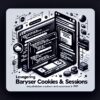Tailwind CSS: Utility-First Design Challenges for Modern Websites

Okay reader, let’s take a deep breath, get our thinking caps on, and get ready to dive into the vibrant and stylish world of Tailwind CSS. Did you warm up your fingers? Awesome, let’s begin!
Understanding Tailwind CSS
CSS, the diva in your computer coding drama, usually prefers things custom-made. But Tailwind CSS, the supermodel version of CSS, is quite different. It believes in a utility-first approach. Unless you’ve been living under a coding rock for some time, you probably know this approach revolves around building interfaces rapidly by composing utility classes directly in your HTML.
But why is this approach worth considering? It’s like assembling LEGO blocks – building complex structures one piece at a time. It gives you granular control over how your website looks and behaves.
Benefits of Tailwind CSS
Let’s talk about what makes Tailwind CSS the toast of modern web design. It promotes a ‘build as you go’ philosophy, which allows you to avoid excessive styling in your browser with a preconceived set of style constraints.
It’s also highly customizable. If you’re a control freak (no judgment it’s a safe coding space), then Tailwind CSS is right up your alley. It is said, “In the kingdom of classes, Tailwind CSS is the king”! Well, it wasn’t exactly said, but we are saying it now, alright?
The Challenges You Might Face
Now, like all things that promise power to the people, Tailwind CSS comes with its fair share of challenges. The most notorious one is the long list of class names. It’s like a trip to grandma’s during the holidays. You will meet lots of members (classes) you don’t recognize or remember. But with time, practice, and a little bit of the ‘I can do it’ attitude, you’ll be able to create magic on your web pages.
How to Overcome Those Challenges
Firstly, don’t panic. Remember that web development is more marathon, less sprint. If you are feeling a bit overwhelmed, take a step back, go for a walk or indulge in something non-coding related. Who knew, right?
When you’re back, start by learning one feature at a time. Master it like you mastered Mario Kart back in the day and then move on to the next. Slowly, steadily, you’ll find yourself becoming comfortable with Tailwind CSS. Don’t forget to refer to the official documentation, it’s like your map in this CSS adventure.
Conclusion
In conclusion, Tailwind CSS is a great tool in your web development toolkit. Adopting a utility-first design approach with Tailwind CSS might feel challenging at first. But remember, nobody learned to bicycle without a few scrapes.
Have patience, practice (with a ton of humor), don’t be afraid of making mistakes, and soon you’ll find yourself tail-winding through the web development world. Happy coding!
P.S. Remember to have fun and enjoy the process. Laugh at your bugs, celebrate your victories, and keep the coffee (or whatever your coder fuel is) handy at all times.


